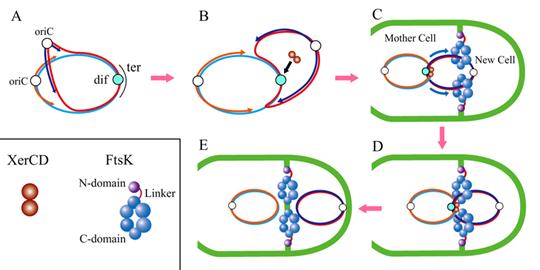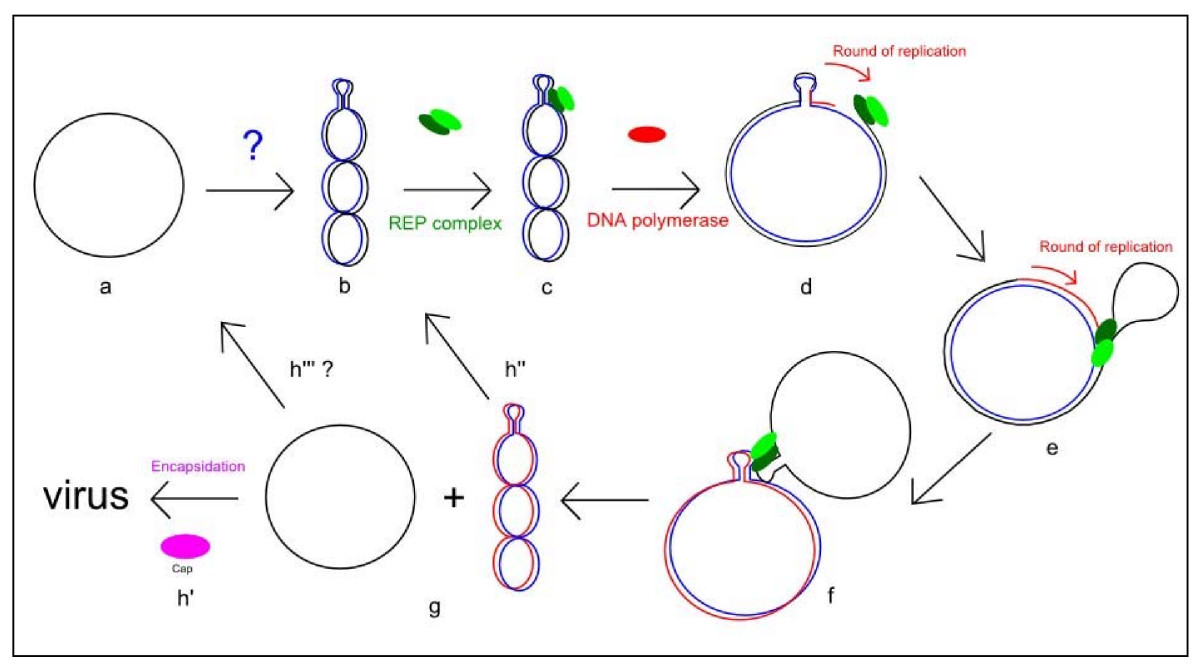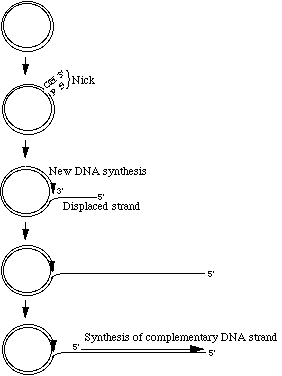Models Of Replication
Models Of Replication Assignment Help | Models Of Replication Homework Help
Models of Replication
The bacterial chromosome consists of a double stranded DNA ring attached to the plasma membrane. Usually there is a single replication fork during replication. This is starts at a point called the origin and moves around the chromosome.
1. The Cairns model. According to this model replication begins by denaturation of the DNA double strands at a specific site called the origin. Two growing points are established and there is bidirectional DNA synthesis. Both strands of DNA are replicated. As the growing points move apart, unwinding of the DNA double strand takes place. The unwinding creates torque since the parental DNA strands cannot unwind freely.

2. The Yoshikawa model. A variation of the Cairns model has been suggested by Yoshikawa. According to the model the newly formed DNA strands become covalently joined to the ends of the parental chromosomes.

3. The rolling circle model is the current model for explaining replication in single stranded DNA viruses. The chromosome first becomes double-stranded by the synthesis of a negative strand. Synthesis is presumed to begin at a specific initiation point on the template ring.
One strand of the parental duplex ring is now cut at a specific point by an endonuclease. This enzyme recognizes a particular sequence at this point. As a result of the cut (‘nick’) a linear strand with 3’ and 5’ ends is created.
The 3’ end serves as a primer for the synthesis of a new DNA strand under the catalytic action of DNA polymerase. The unbroken strand is used as the template for this purpose, and a complementary strand is synthesized. Thus the parental molecule itself is used as a primer for initiating replication.
The 5’ end of the broken strand becomes attached to the plasma membrane of the host bacterium. Such replicating phage DNA is commonly found associated with bacterial membranes.
Genetic information is preserved in a single stranded template ring which remains circular and serves as an endless template. There is no swiveling problem or creation of torque in the rolling circle model.

4. Replication in a duplex-rod prokaryote chromosome. In the virus T7 the chromosome is a duplex rod of about 40,000 base pairs. The size permits a coding capacity of about 25genes. The parental strands separate at a point about 17% from one end. The site is called the growing point. Bidirectional DNA synthesis takes place from this point. Separation of the strands results in a replication intermediate called the eye form.
5. Replication in eukaryote chromosomes. In Drosophila, long DNA molecules are seen bearing numerous eyes growing bidirectionally. However, no secondary eye develops with the primary eye.
For more help in Models of Replication please click the button below to submit your homework assignment.